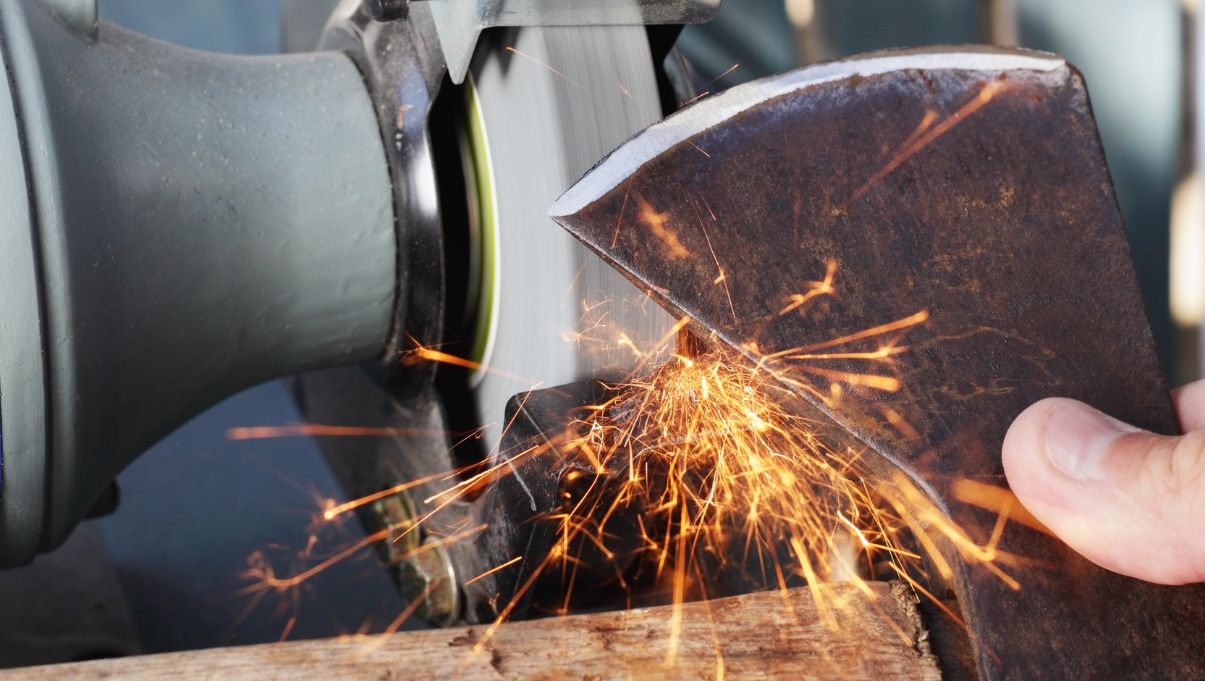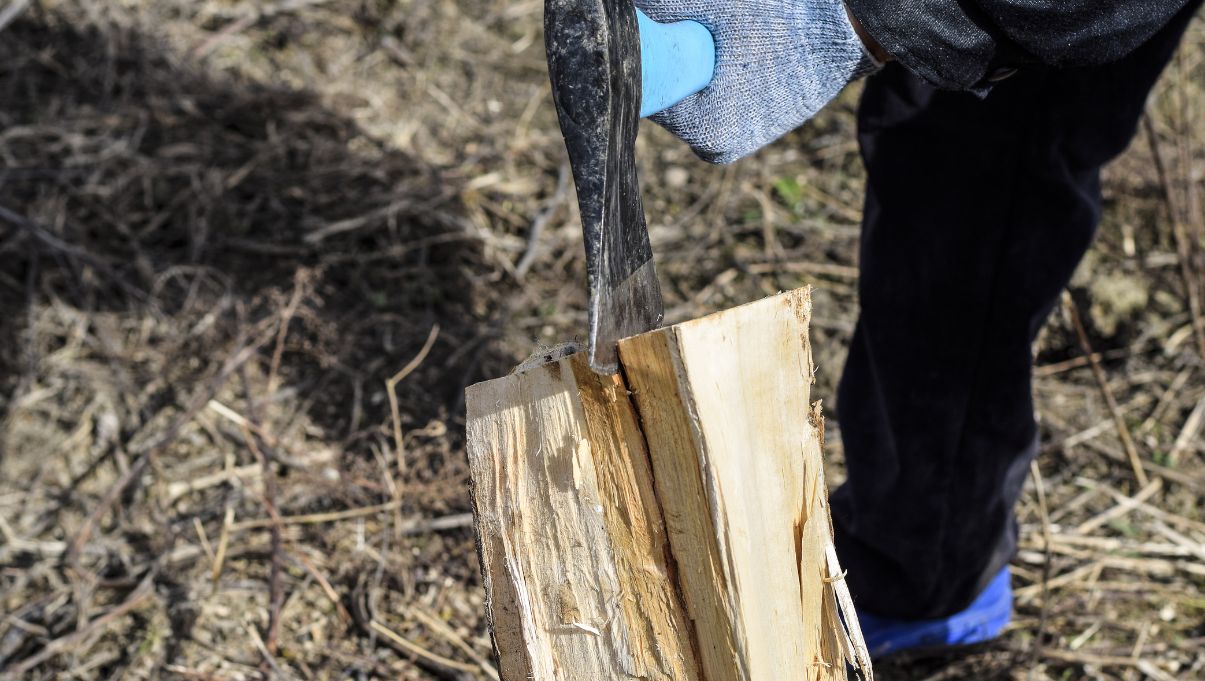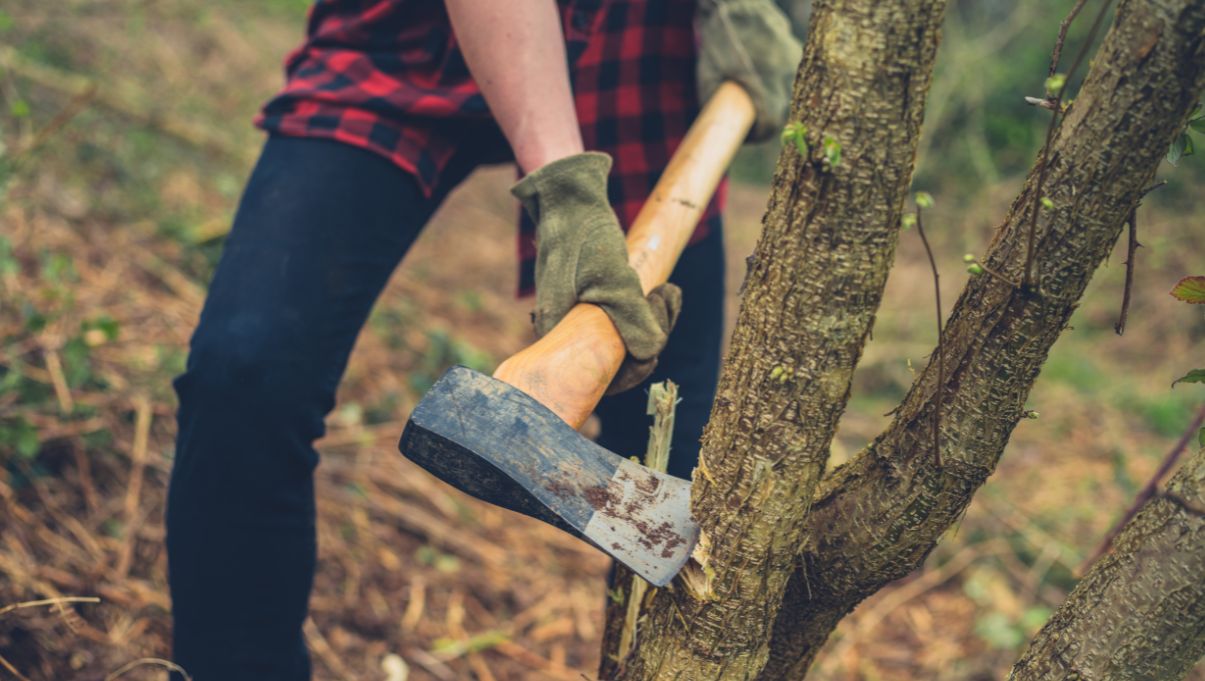Introduction
An axe is a versatile and indispensable tool, whether you use it for chopping firewood, clearing brush, or felling trees. However, a dull axe can make these tasks frustrating and time-consuming. To maximize its effectiveness, it’s crucial to keep your axe properly sharpened. In this article, we will explore the ideal sharpness for an axe and provide you with two effective methods for sharpening it, along with essential tools, expert tips, and answers to frequently asked questions.
How Sharp Should an Axe Be?
Before delving into the sharpening process, it’s essential to understand the desired sharpness for an axe. An axe should be razor-sharp to ensure efficient cutting. A sharp axe has a fine edge that can easily bite into wood, minimizing effort and reducing the risk of accidents. However, it’s important to strike a balance between sharpness and durability. Overly sharp edges may chip or dull quickly, reducing the axe’s effectiveness.
How to Sharpen an Axe?
Method 1: Sharpening an Axe with a File
- Gather the necessary tools: You’ll need a flat file, a round file (optional for curved blades), a file guide, a vice or clamps to secure the axe, and a sharpening stone or honing compound.
- Secure the axe: Place the axe head securely in a vice or use clamps to secure it to a workbench.
- Align the file guide: Attach the file guide to the file to ensure consistent angle and positioning while sharpening.
- Start with the bevel: Place the file guide on the bevel of the axe at the desired angle (usually around 25-30 degrees). Move the file in smooth strokes along the bevel, from the base to the tip, maintaining consistent pressure.
- Repeat on the other side: Flip the axe and repeat the process on the other bevel, ensuring both sides are sharpened evenly.
- Finish with a sharpening stone: Once both bevels are sharpened with the file, use a sharpening stone or apply honing compound to a piece of leather or wood. Stroke the bevel gently across the stone or compound to remove any burrs and polish the edge.
- Test the sharpness: Safely remove the axe from the vice and test its sharpness by making a few controlled cuts. If necessary, repeat the sharpening process until the desired sharpness is achieved.

Method 2: Using a Grinder
- Prepare the grinder: Equip a bench grinder with a medium-grit grinding wheel.
- Safety precautions: Wear safety goggles, gloves, and a face shield to protect yourself from sparks.
- Position the axe: Hold the axe securely against the grinder’s tool rest, ensuring the blade is in contact with the grinding wheel.
- Grinding process: Move the axe blade gently back and forth across the grinding wheel, maintaining a consistent angle. Avoid applying excessive pressure, as this can overheat the blade.
- Cool the axe: Regularly dip the axe into water or a cooling solution to prevent overheating.
- Final touch-ups: Once the primary bevel is ground, switch to a finer-grit grinding wheel to refine the edge and remove any burrs.
- Test the sharpness: After sharpening, check the sharpness by making controlled cuts. If necessary, repeat the process until the desired sharpness is attained.

Tips:
Regular maintenance: Sharpen your axe after significant use or when you notice a decrease in its cutting efficiency.
Consistent angle: Maintain a consistent sharpening angle throughout the process to ensure an even edge.
Safety first: Always wear protective gear, secure the axe properly, and exercise caution while sharpening.
Proper storage: Store your axe in a dry place and protect the blade with a sheath or blade guard to prevent unnecessary damage.
FAQs:
Do I need to sharpen my axe?
Yes, it is crucial to sharpen your axe regularly. Over time, the blade of an axe can become dull due to use and contact with various materials, such as wood and dirt. A dull axe requires more force and effort to cut through materials, making tasks inefficient and potentially dangerous. Sharpening your axe ensures that it maintains its effectiveness, allowing for smoother and safer cutting.
Can you sharpen an axe with a knife?
While it is technically possible to sharpen an axe with a knife, it is not recommended. Knives and axes have different blade designs and require different sharpening techniques. Knives typically have a thinner and narrower blade, while axes have a thicker and wider blade with a bevel. To properly sharpen an axe, it is best to use specialized tools like files, grinders, or sharpening stones specifically designed for axes. These tools allow you to maintain the correct angle and shape of the axe blade, resulting in an optimal cutting edge.
What is the best angle to sharpen an axe?
The ideal angle for sharpening an axe generally ranges from 25 to 30 degrees. This angle provides a balance between sharpness and durability. A smaller angle, such as 20 degrees, will result in a sharper edge but may be more prone to chipping and dulling quickly. On the other hand, a larger angle, such as 35 degrees, will provide a more durable edge but may sacrifice some cutting efficiency. It’s important to note that the specific angle may vary depending on personal preference and the intended use of the axe.
Conclusion
Properly sharpening your axe is essential for its optimal performance, ensuring efficient cutting and reducing the risk of accidents. Whether you choose the file method or opt for a grinder, following the correct techniques and using the right tools will result in a razor-sharp edge. Remember to prioritize safety, practice consistency, and regularly maintain your axe to prolong its lifespan and make your tasks easier and more enjoyable.



